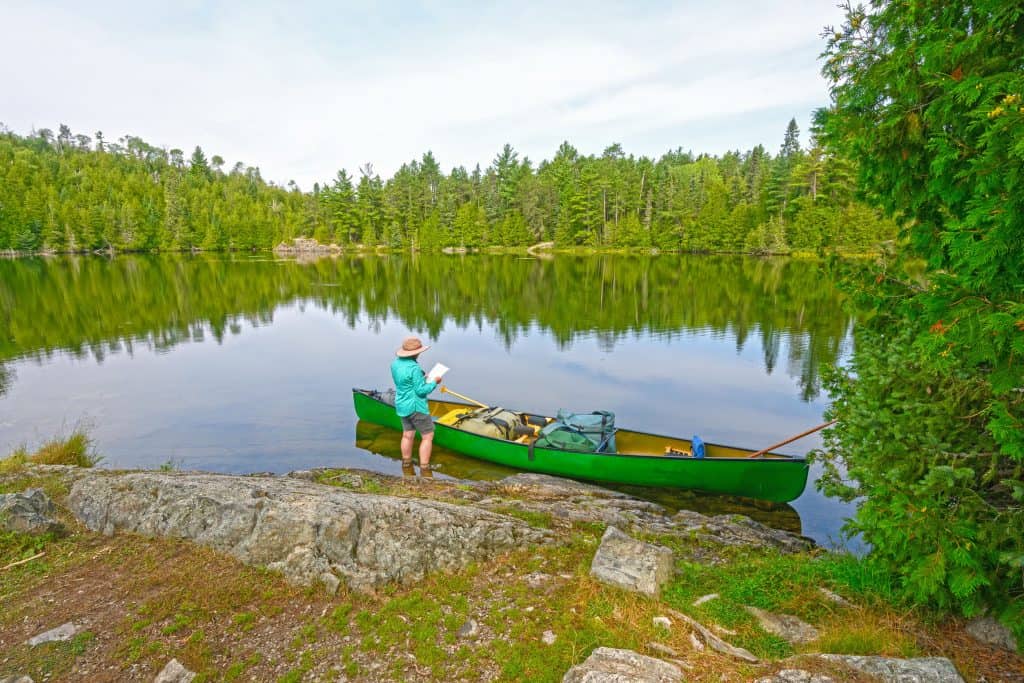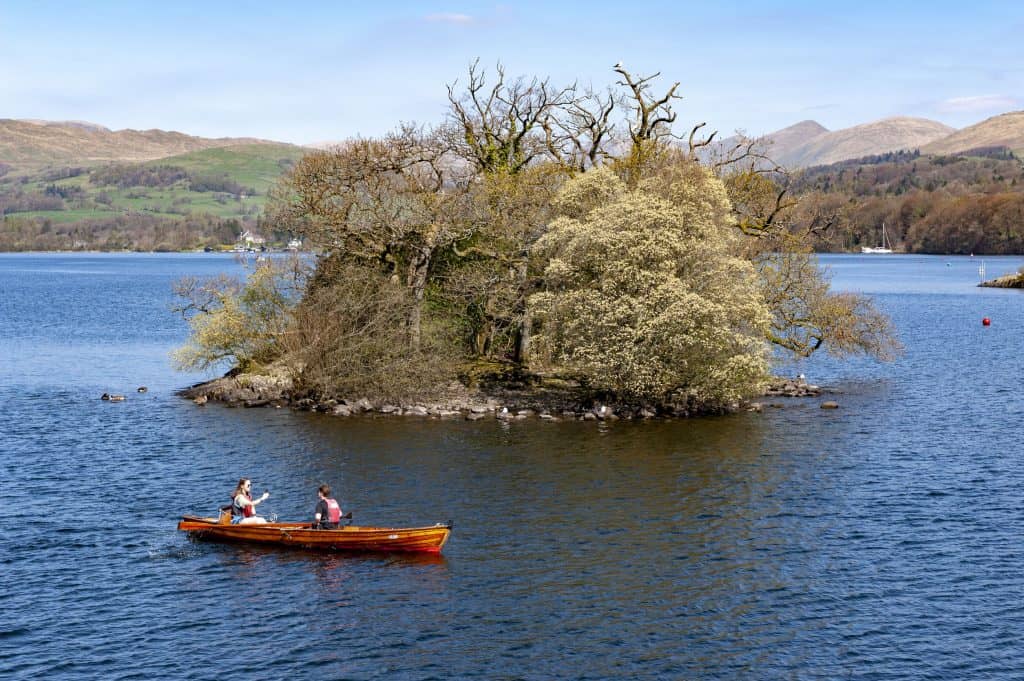
Are you thinking about racing a buddy across the lake in a canoe? Well, there’s no need to panic! As long as you understand how speed effects a canoe, there’s no doubt you’ll win.
The average time it takes to canoe 10 miles is 3.5 hours to travel 10 hours. This is because the average canoer goes about 3 mph. Factors like equipment, number of canoers, and weather can impact the time it takes.
The speed of a canoe depends on many factors but usually, a canoer can control most of them. In all actuality, the true speed of a canoe is up to the canoer(s).
Average Speed of Canoes
The average speed that canoe travels at is 3 mph. This speed is based on paddling a canoe in straight, still water. In this situation, there is little to no wind and two paddlers.
With that in mind, when planning to canoe ten miles, you can plan on your canoe trip taking about 3.5 hours.
This time may increase or decrease depending on the number of canoers as well as wind and currents. Remember to calculate in some of these outside elements when planning.
One helpful thing to do when you are trying to calculate the time a 10 mile trip will take is to look at the canoe itself.
Often, canoes sold online from companies, or canoes sold on internet sites like Amazon and eBay will tell you the speed of the canoe based on things like weight, durability, and materials.
However, remember that this speed they give you does not factor in rough water, currents, or shallow and deep water.
Canoers Contributions to Speed
Despite what many people tend to believe, canoers are usually more in charge of speed than any other factors that might come into play while canoeing.
Canoers are in charge of controlling the canoe, paddling speed, and canoers even choose what type of canoe they want, which can often affect speed.
Canoers are able to steer and turn the boat as much as they want, they choose the waters they want to canoe on, and they control the effort put into paddling.
Now, of course, you may be thinking, there are always factors that affect the speed that people can’t control, like the weather. This is true; however, canoers do have the ability to check ahead and plan the best weather for them to head out onto the water.
Of course, the sunny forecast could always turn cloudy, and the breeze could always turn into a heavy wind. More often than not, if canoers set out on a sunny day, they will get what they expect. Just as frequently, when canoers head out on a stormy day, they would be prepared for all that could happen and how fast they will be able to go.
Either way, the most important factor is the people propelling the canoe. Faster paddling and correct steering will decrease the time it takes to reach the finish line.
Factor: Amateurs vs. Professionals
Let’s compare canoeing to something like playing the piano. Of course, a piano player who has been playing and practicing for years will do better than someone who just started.
Surely, canoers who have been canoeing for years will be able to go much faster than someone who has just taken up the sport.
Professional canoers will know how to steer, how to control the canoe and will be able to paddle faster than most with their experience.
Amateur canoers may have trouble steering straight or turning. They may not be able to handle a change of current or weather with ease and expertise. Amateur canoers might also have trouble getting to where they want if they aren’t familiar with the area they are paddling in.
They also tend to be more leisure in their paddling and don’t care much about their speed.
Amateur canoers will go out in the water to practice paddling and turning more, while a professional canoer might be looking for a race, or to beat a personal record.
It is the professional canoers that can get their canoes up to 5 or 6 mph, while amateurs usually paddle at about 1 to 2 mph.
Keep this in mind for time. If you are a beginner, a long trip will take you longer. If you have practice, you might finish those 10 miles in less than 3 hours.
Factor: Effort and Shape of Canoers
Canoeing speed also depends on the effort that paddlers put into canoeing and how physically in shape they are.
Paddling a canoe, especially for a long distance, like 10 miles, is exhausting. It takes a great deal of upper body strength to paddle. If a canoer is not in good shape physically, it can easily wear them out.
Think about it this way, if two people were going to run a marathon. One of them had been in other marathons and trained often, while the other didn’t try very hard and perhaps hasn’t been training their body, it’s easy to know which person will most likely succeed.
The more practiced, and in shape runner will get farther than the runner who has not trained hard. The same goes for canoeing.
If a person is wiped out from paddling for one mile compared to another who is still going strong at mile 5, it’s easy to tell which one will be faster.
The amount of effort that is put into paddling a canoe is directly tied into how fast it will go.
I remember for on one Fourth of July my grandfather asked me to canoe with him on a lake. He was a strong man and had been canoeing his whole life. When we both got out on the water and started going straight, I notice many people passing us.
I was very confused as to why my grandfather, whom I knew was strong was going to slow compared to others.
Then I watched later as my cousin went out with him. My cousin was older than me, stronger than me, and had been canoeing for many years. My grandfather and cousin went so much faster and passed people with ease.
Even when one person on the canoe is not as used to the constant motion and strength canoeing takes, the trip takes longer.
Practice may not make perfect but it does make progress.

Other Depending Factors
| Factors That Effect Speed: |
| Skill |
| Weather |
| Effort |
| Water (rough or smooth) |
| Currents |
| Canoe Shape |
| Canoe Material |
| Water Height |
| Physical Aptitude |
While factors like effort, practice, and paddling capabilities rely solely on the canoer, there are many other factors that can affect the speed of the canoe itself.
We talked briefly about the weather and how canoers can plan accordingly around the weather they desire. However, it’s important to remember that weather effects more than just the canoer.
A windy day will have a great effect on the water, and thus affect the currents in the water.
If a canoer is paddling with the current, they will tend to go faster than they would in still water. But, if a canoer is going against the current they can go much slower.
The weight of the canoe also has a big effect on speed. Most canoes can hold a lot of weight from things like equipment, people, gear, food, and so on. If the canoe is loaded with a lot of weight, it will be harder to paddle which will make things go slower.
If a canoer packs light, they are able to really propel the canoe forward because it takes less of an effort to paddle and creates a greater speed.
The material and shape of a canoe also affect the speed. Usually, canoes with a square stern and canoes that form a v in the bottom go faster than others. The v shape at the bottom cuts through the water easier.
The square stern allows you to mount a trolling motor on the canoe which will greatly affect the speed.
Materials like wood, aluminum, and plastic make slower canoes because they have a greater weight and they have higher durability. Materials like fiberglass composites and Kevlar composites are much faster because they weigh less.
So, before saying yes to a race on a big lake, make sure that all these factors are taken into account. Practice a lot, just like you would do for a marathon or any other competition.
If you feel confident, make a little bet with your buddy and tell them you could definitely go 10 miles in less than 3 and a half hours!
